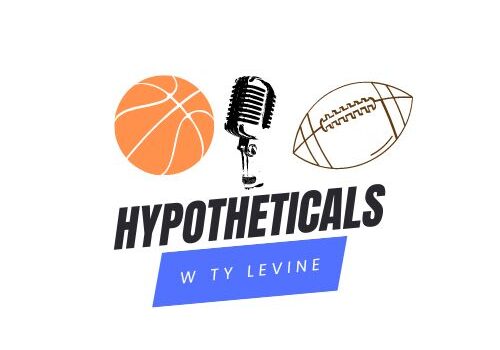$1.7 billion, $2.5 billion, $3.2 billion, $6 billion; these are the TV deal sizes of the Angels, the Phillies, the Astros, and the Dodgers. This is all additional income that is tacked on to the money that is allocated to each team by the MLB. In some cases, teams are getting north of 75 million dollars per year. Notably, the highlights among these absurd figures center on the two biggest markets in the USA; the Dodgers have a flat $280 million boost in revenue per year while the Yankees have a 5% escalator per year which will transform their $85 million per year into over $367 million per year in 28 short years. Unsurprisingly, this extra money factors pretty heavily on team payrolls, with the “haves” lavish money on all kinds of players while the “have nots” penny-pinch like Ebenezer Scrooge.

Not pictured: the Sabermetrics Gnomes
In a world where the freaking Astros are making north of 80 million dollars per year to send out players juuuust competent enough not to soil themselves on the field to appease their 17 remaining despondent fans, some teams that are expected to win have much less money to play with. Most famous are the Oakland A’s with Billy Beane and his merry band of advanced analytics gnomes working 24/7 trying to find the next big metric to exploit to unearth value in players. The A’s have had their successes, but the team that doesn’t get enough credit in this regard is the Atlanta Braves. Frank Wren and Co. have to work with a pathetic $10-20 million per year for the past 6 seasons and FOR THE NEXT 17 YEARS in a deal negotiated by Atlanta Legend/Bastard/Legitimately Crazy Person, Ted Turner. Yet, the Braves have been hugely successful in spite of the competitive disadvantage, winning the division once and reaching postseason play three of the last four years (1 wild card play in game is included).
As a fan, one shouldn’t get hung up on the fact that this is a competitive disadvantage. You have to look at it in a completely different way: The Braves as an organization are just better than other teams. The success of the front office should be all the more sweeter, and you should recognize it and revel in it. I’m not descending into homerism here, my claim is as close to objective fact as Miguel Cabrera being a better hitter than B.J. Upton. Sure, the Braves have had their misses in free agency or trades in the past few years; BJ “My swing has more moving parts than a Rube Goldberg machine” Upton and Dan “Forearms” Uggla spring into mind immediately, but they have been masterful in building up their own talent and have been extremely shrewd in spending their money in almost every other situation. Homegrown Braves include the ENTIRE starting rotation, a group that had a 3.51 ERA last season, Freddie Freeman, Jason Heyward, Craig Kimbrel, and Andrelton Simmons. These guys all came up to the big leagues in the past four years; think about that. You have the best defensive player in all of baseball, the best closer in all of baseball, 5 top three starting pitchers, an NL-MVP candidate first baseman, and a legit 5-tool guy with 30-30 potential if he can just stay freaking healthy (please Heyward…my fingers are crossed).

Player development from the farm system is one thing, but the Braves have also been pretty darn good at dealing for other MLB players while keeping an eye on the checkbook. Apart from the Uggla and B.J. Upton deals, the Braves have done quite well in the trade market. Justin Upton looks like the 2x all star version of himself much more often than he doesn’t, and Chris Johnson was a surprise batting title contender last year. All that was given up for these two cornerstones of the offense was Martin Prado (who was beloved, granted) and some prospects. Other less prominent examples exist, but the point I’m trying to prove is simple: The front office puts the team in a position to win while retaining as much money as possible. The best example comes from the relief pitching, though. Wren has compiled the best set of relievers in all of baseball (this is objective mind you, the Braves bullpen had a MLB leading 2.46 ERA last season, and have not finished outside the top three in ERA in the past four years) for nearly a half decade. Relief pitchers are pitchers that are not as consistent as starters, and so they are harder to evaluate than starters. The fact that the Braves have been able to compile such good talent to consistently field a bullpen that is elite speaks volumes to the team’s ability to build a quality roster. The fact that a platoon of relievers that can eat up 3 and 1/3 innings in the middle of games is cheaper than a consistent starter in the rotation that can give 7 innings is an example of a smart team realizing that there are many ways to get a solid 9 innings of pitching and choosing the way that saves them the most money.
Maybe it’s time to come back and address the issue at hand instead of driving my Pro-Braves agenda down all of your throats. Money in baseball is unequally distributed; it is a fact. Bud Selig and whoever will replace him in the next year know this, and while all of us fans of “poor” teams can complain all we want, it’s not going to change. The new deals are too lucrative, and too much money stands to be made for complete parity to exist. It really isn’t an ideal situation, but there is a silver lining. Money hasn’t really made all the difference between winners and losers. Sure, some contenders are built on stacks of money, but two of the top 5 TV deals belong to the Padres and the Astros which are pretty much the epitome of crappy teams. And even though teams like the Marlins and the Royals have low amounts of TV money coming in, so do the Braves, the A’s, the Pirates, and the Cardinals. In fact, four of the last six World Series winners have had TV deals that were below average (this includes the Phillies old TV deal). Now, I don’t have a background in statistical analysis, but it certainly seems like how much money a team has and its performance aren’t hugely correlated in these RECENT years (in the past, it was more relevant).

Baseball season is right around the corner, and I felt compelled to write something about something relevant. Every year, it seems as if all sports, not just baseball, become more and more engulfed by a deluge of salary numbers and TV deal sizes. Frankly, it’s getting pretty damn tiring. The truth is, I will always love the Tomahawk Chop, Pirates fans will always bleed black and gold, Phillies fans will always be assholes, and every real fan of every other franchise will always follow their team with the same amount of passion even if their TV deal constituted of a stack of bubble gum and a coupon book every year. I say we forget about the money and focus on the baseball. That is unless Frank Wren can convince the world arm wrestling federation to take on Dan Uggla’s remaining contract, then I may have to write another article….








Comments